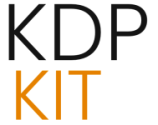The Evolving Landscape of Global Book Publishing: A Decade of Transformation and Future Outlook

The global book publishing industry, a bedrock of knowledge dissemination, cultural expression, and entertainment, is navigating a period of profound transformation. In an era defined by rapid technological advancements and evolving consumer behaviors, the market has undergone a significant metamorphosis. This comprehensive analysis delves into the key drivers fueling its expansion, the emergent trends reshaping its trajectory, the inherent challenges publishers face, and offers projections for the period spanning 2025 to 2035. Understanding these dynamics is paramount for stakeholders aiming to thrive in this ever-changing environment.
Key Growth Drivers Shaping the Market
Several powerful forces are propelling the global book publishing market forward, creating new opportunities and expanding its reach. These catalysts are reshaping how books are created, distributed, and consumed.
Digital Transformation and E-book Adoption
The widespread availability of digital reading devices, including e-readers, tablets, and smartphones, has dramatically enhanced the accessibility and convenience of books. This digital shift has not only broadened the market for e-books but has also influenced print sales by making literature more readily available and discoverable. The ease of purchasing and downloading digital content offers significant convenience for many readers.
Growth in Emerging Economies
Rising literacy rates, increasing disposable incomes, and a growing appetite for educational and recreational reading material in emerging economies are significant contributors to market growth. As more individuals gain access to education and economic opportunities, the demand for books, both physical and digital, naturally escalates.
Audiobook Popularity Surge
The burgeoning popularity of audiobooks represents a substantial growth segment. Commuters, fitness enthusiasts, and individuals who prefer listening to reading are driving this trend. Advancements in audiobook production and distribution platforms have made this format more accessible and appealing than ever before.
Self-Publishing Revolution
The rise of self-publishing platforms has democratized the publishing process, empowering authors to bypass traditional gatekeepers and connect directly with readers. This has led to an explosion of diverse content and a more competitive publishing landscape, often fostering innovation.
Rise of Niche and Independent Publishers
While large publishing houses continue to dominate, there’s a noticeable growth in niche and independent publishers catering to specific genres or communities. These smaller entities often foster unique voices and offer specialized content that resonates deeply with targeted audiences.
Subscription Models and Digital Platforms
The adoption of subscription-based models for e-books and audiobooks, akin to streaming services for music and video, is gaining traction. These models offer readers continuous access to a vast library of content for a recurring fee, fostering reader loyalty and predictable revenue streams for publishers.
Emerging Trends Redefining the Publishing Ecosystem
Beyond the core growth drivers, several innovative trends are actively reshaping how books are created, distributed, and consumed, leading to a more dynamic and reader-centric publishing ecosystem.
Personalization and Reader Data Utilization
Publishers are increasingly leveraging reader data to personalize recommendations, marketing efforts, and even content creation. Understanding reader preferences allows for more targeted and effective engagement, leading to increased sales and reader satisfaction. For instance, platforms like Amazon utilize purchase history to suggest relevant titles, enhancing the discovery process for readers.
Interactive and Multimedia Content Integration
The lines between traditional books and digital media are blurring, with publishers experimenting with interactive elements, embedded videos, and augmented reality features to enhance the reading experience, particularly in educational and children’s books. Imagine a history book where clicking on a historical figure brings up a short video documentary, or a children’s book where characters animate on the page.
Print-on-Demand Technology Advancement
Print-on-demand (POD) technology allows publishers to print books only when they are ordered, significantly reducing inventory costs and waste. This is particularly beneficial for niche titles, backlist books, and self-published authors, ensuring wider availability without the risk of overstock. This technology enables a more sustainable approach to publishing, minimizing the environmental impact of unsold inventory.
Direct-to-Consumer (DTC) Sales Channels
Many publishers are investing in their own e-commerce platforms and direct sales channels, aiming to build stronger relationships with readers, gather valuable data, and retain a larger share of the revenue, bypassing traditional retail intermediaries. This allows for more direct communication and engagement with the end consumer.
Sustainability and Eco-Friendly Practices
There is a growing consumer and industry focus on sustainability. Publishers are Exploring eco-friendly printing practices, recycled materials, and reduced carbon footprints in their supply chains, aligning with broader environmental consciousness. Initiatives like using recycled paper or implementing carbon-neutral shipping are becoming increasingly important.
AI in Content Creation and Editing
Artificial intelligence is beginning to play a role in various aspects of publishing, from assisting with content generation and summarization to aiding in editing and proofreading. While human oversight remains critical, AI tools offer potential efficiencies in streamlining the production process.
Global Content Diversification and Translation
Publishers are increasingly seeking to diversify their offerings by acquiring and translating content from different languages and cultures. This not only expands their market reach but also enriches the literary landscape by introducing new perspectives and stories. The success of translated works from various international markets highlights the global appetite for diverse narratives.
Challenges Confronting the Publishing Industry
Despite the positive growth trends, the book publishing market faces several persistent and evolving challenges that require strategic navigation and adaptation.
Piracy and Copyright Infringement
The ease of digital reproduction makes piracy a persistent threat, impacting sales and revenue for authors and publishers. Robust digital rights management (DRM) and ongoing efforts to combat illegal distribution are crucial. Publishers are investing in technological solutions and legal measures to protect intellectual property.
Competition from Other Media Forms
Books compete for consumer attention with a vast array of other entertainment options, including streaming services, social media, video games, and podcasts. Capturing and retaining reader engagement in this crowded media landscape is a significant challenge. Publishers are exploring innovative marketing strategies and cross-promotional opportunities to stand out.
Rising Production and Distribution Costs
While digital formats have reduced some costs, printing, marketing, and distribution expenses, particularly for physical books, can still be substantial. Fluctuations in paper prices and shipping costs can also impact profitability. Managing these costs effectively is essential for maintaining financial viability.
Navigating the Digital Rights Landscape
Managing digital rights, licensing agreements, and ensuring fair compensation for authors in the digital realm can be complex. The evolving nature of digital distribution platforms and international copyright laws adds to this complexity. Publishers must stay abreast of legal and technological changes to ensure fair practices.
Maintaining Discoverability in a Saturated Market
With the proliferation of self-published and traditionally published titles, ensuring that books are discoverable by their intended audience is a significant hurdle. Effective marketing and metadata optimization are critical. Publishers are increasingly relying on SEO strategies, social media marketing, and influencer collaborations to enhance discoverability.
Adapting to Evolving Retailer Dynamics
Changes in the retail landscape, including the dominance of online marketplaces and shifts in bookstore sales, require publishers to adapt their distribution and sales strategies continually. Building strong relationships with online retailers and exploring alternative sales channels are key strategies.
Balancing Traditional and Digital Formats
Publishers must strategically balance investment and resources between traditional print formats and the growing digital and audio formats to cater to diverse reader preferences and maximize market reach. This requires a nuanced understanding of market demand and consumer behavior across different formats.
Future Projections for the Global Book Publishing Market (2025-2035)
Looking ahead, the global book publishing market is poised for continued evolution, driven by technological innovation and changing consumer habits. The next decade promises further integration of digital solutions and a more personalized approach to reader engagement.
Continued Growth in E-books and Audiobooks
The demand for e-books and audiobooks is expected to continue its upward trajectory, with audiobooks likely to see particularly strong growth as more content is produced and listening habits become more ingrained. The convenience and accessibility of these formats will remain key drivers. Industry analysts predict a steady increase in market share for digital formats.
Increased Integration of AI and Automation
AI is expected to become more deeply integrated into the publishing workflow, from AI-assisted writing and editing to automated marketing campaigns and personalized reader experiences. This could lead to greater efficiency and new creative possibilities. AI tools may also assist in identifying emerging literary trends and predicting reader preferences.
Dominance of Data-Driven Publishing Strategies
Publishers will increasingly rely on data analytics to understand reader behavior, optimize marketing, and make informed decisions about content acquisition and development. This data-centric approach will be crucial for success. Analyzing sales data, website traffic, and social media engagement will provide valuable insights.
Expansion of Subscription Services and Bundling Options
More innovative subscription models, potentially bundling e-books, audiobooks, and even exclusive content or author interactions, are likely to emerge, offering readers more value and publishers recurring revenue. Services like Kindle Unlimited and Audible’s subscription model are early examples of this trend.
Hybrid Publishing Models Gaining Prominence
Hybrid publishing models, which blend elements of traditional and self-publishing, may become more prevalent, offering authors more flexibility and publishers access to a wider pool of talent. These models can provide authors with professional editorial and marketing support while retaining more creative control.
Focus on Community Building and Direct Engagement
Publishers will likely prioritize building direct relationships with their readers through online communities, social media engagement, and exclusive events, fostering loyalty and gathering valuable feedback. Creating author fan groups or online book clubs can enhance reader engagement.
Personalized Reading Experiences and Content Curation
The trend towards personalization will intensify, with AI and data playing a role in curating reading lists, recommending books based on mood or activity, and even enabling customized book editions. Imagine receiving a personalized reading list tailored to your specific interests and recent reading habits.
Sustainable Publishing Practices Becoming Standard
Environmental consciousness will drive a greater adoption of sustainable printing methods, reduced waste, and ethical sourcing throughout the publishing supply chain, becoming a standard expectation rather than an option. Consumers are increasingly prioritizing brands with strong environmental commitments.
Conclusion: Navigating the Future of Publishing
The global book publishing market in 2025 and beyond is characterized by dynamism and adaptation. The convergence of digital technologies, evolving consumer preferences, and innovative business models presents both opportunities and challenges. Publishers who embrace digital transformation, leverage data effectively, foster direct reader engagement, and remain agile in their approach will be best positioned to navigate this exciting and transformative decade. The future of publishing is not just about the stories we tell, but how we tell them, how we distribute them, and how we connect them with readers in an increasingly interconnected world. By staying attuned to these evolving trends and proactively addressing challenges, the industry can continue to thrive and connect readers with the power of the written word.






